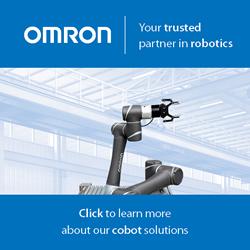Novotechnik - New Customizable Angle Sensors
Novotechnik, U.S. introduces the Vert-X 2800 Series of sensors that measure angular position. These sensors convert rotational angle into an analog or digital output. Digital interface options include J1939 CANBus as well as SPI and PWM.
Southborough, MA… Novotechnik, U.S. introduces the Vert-X 2800 Series of sensors that measure angular position. These sensors convert rotational angle into an analog or digital output. Digital interface options include J1939 CANBus as well as SPI and PWM.
Vert-X 2800 Series sensors are available in single and fully redundant versions. Measurement range is 0 to 360° with repeatability of 0.1°. Available analog outputs are 4 to 20 mA, 0.1 to 10 V, 10 to 90% of supply voltage and 5 to 95% of supply voltage. Up to two programmable TTL-level switches are options.
Users can select a stock part to simply measure angle or they can be configured, using a tool connected to your PC called Easy Adapt, to be application-specific. Possible configurations include start- and end-angles for less than 360° maximum range, index point, cw or ccw indication, calibration settings and non-linear curves.
Other key Vert-X 2800 Series specifications include housing base diameter of 28 mm, up to 14-bit resolution and linearity to ±0.1 % of measurement range. The sensors are sealed to IP 65, life is ≥ 50 million movements and MTTF is over 100 years.
These sensors are ideal for industrial, medical and off-highway vehicle applications with an operating temperature range of -40 to +85°C.
To learn more contact Novotechnik U.S. at 508-485-2244 or view specific Vert-X 2800 Series information at www.novotechnik.com/vx28 .
Featured Product

Discover how human-robot collaboration can take flexibility to new heights!
Humans and robots can now share tasks - and this new partnership is on the verge of revolutionizing the production line. Today's drivers like data-driven services, decreasing product lifetimes and the need for product differentiation are putting flexibility paramount, and no technology is better suited to meet these needs than the Omron TM Series Collaborative Robot. With force feedback, collision detection technology and an intuitive, hand-guided teaching mechanism, the TM Series cobot is designed to work in immediate proximity to a human worker and is easier than ever to train on new tasks.
